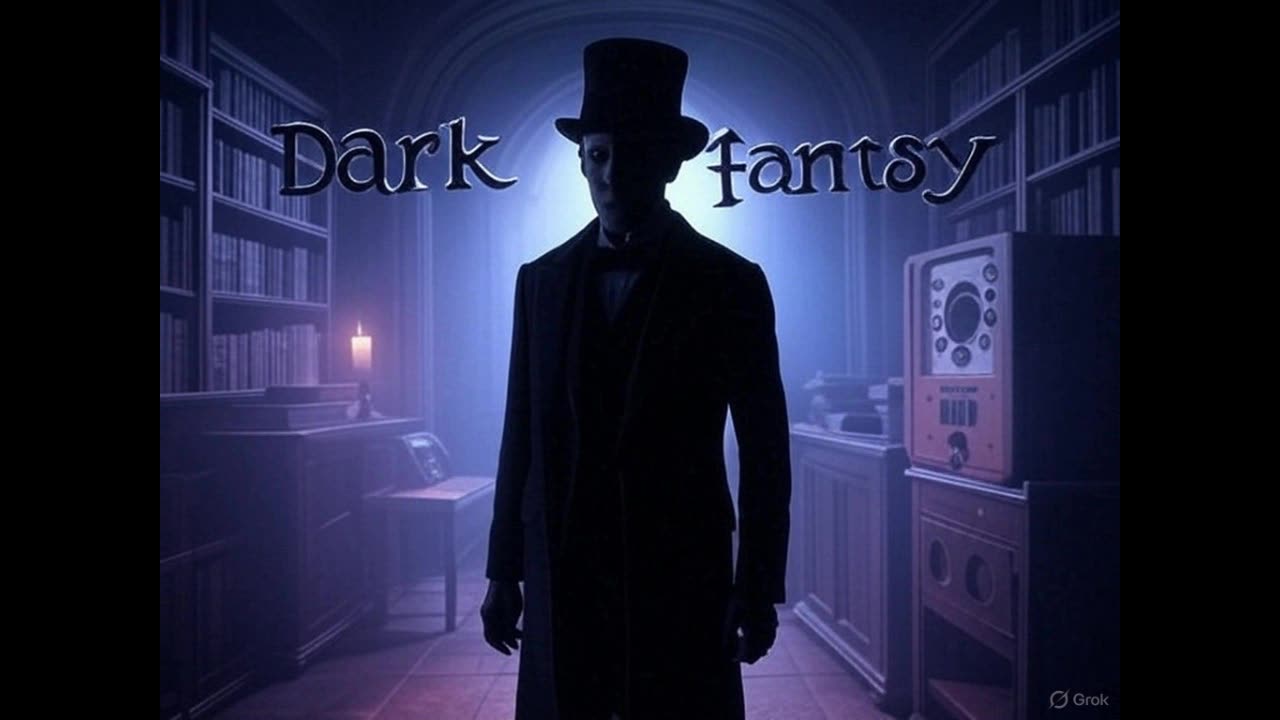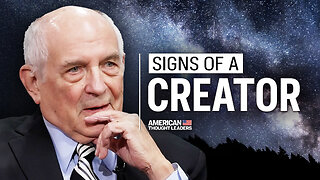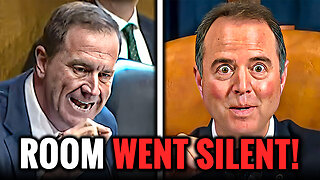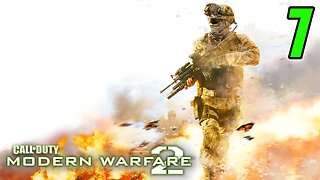Premium Only Content

Dark Fantasy: The Cup of Gold (May 8, 1942)
Setting: A contemporary (1942) American setting, possibly a small town, rural estate, or urban antique shop, with scenes shifting to a mythical or supernatural realm tied to the titular “Cup of Gold.” The episode employs sound effects such as clinking metal, eerie hums, ghostly whispers, and howling winds to create a mystical, foreboding atmosphere, characteristic of Dark Fantasy’s vivid storytelling.
Plot:
Introduction: The episode opens with the show’s ominous theme music and announcer Tom Paxton (or possibly Keith Payton, as sources vary) introducing Dark Fantasy as a series of “tales of the weird and supernatural.” The narrator sets the stage for a story centered on a legendary “Cup of Gold,” hinting at its allure as a source of power, wealth, or doom, evoking a sense of mythical danger.
The Premise: The story likely focuses on a protagonist—perhaps an adventurer, scholar, or ordinary person—who encounters the Cup of Gold, a fabled artifact imbued with supernatural properties. The cup might be discovered in a forgotten collection, unearthed in a mysterious ruin, or offered by a shadowy figure with ulterior motives. Drawing on Bishop’s penchant for folklore and horror, the cup could grant wishes, confer immortality, or exact a terrible price, possibly tied to a curse, a demonic entity, or a pact with dark forces. The narrative may echo myths like the Holy Grail or cursed treasures, with a distinctly Lovecraftian or Poe-esque twist.
Escalating Horror: As the protagonist interacts with the cup, supernatural phenomena emerge. They might experience visions of opulence or terror, hear seductive or threatening voices, or encounter ghostly guardians of the artifact. The cup’s power could tempt the protagonist with promises of wealth or knowledge, only to reveal its malevolent nature—perhaps draining their vitality, summoning a monstrous entity, or trapping them in a nightmarish realm. Sound effects like clinking gold, a heartbeat, or distorted chants amplify the sense of dread, with scenes of the protagonist grappling with greed or fear in a shadowy, otherworldly setting.
Climax and Resolution: The climax likely involves a desperate struggle to break the cup’s hold, requiring the protagonist to resist its allure or confront its supernatural guardian. Bishop’s stories often end with a twist or ambiguity, so the protagonist might destroy the cup at great personal cost, escape its influence only to find it reappearing, or succumb to its curse, leaving their fate uncertain. The episode concludes with the narrator reflecting on the dangers of forbidden desires, leaving listeners with “goose pimples” as Bishop intended.
Themes: The seductive peril of greed, the cost of pursuing forbidden power, and the human struggle against supernatural temptation. The episode reflects Dark Fantasy’s signature mix of horror, myth, and psychological tension, crafted to ignite listeners’ imaginations.
Cast and Roles:
Protagonist: Played by an unnamed actor, likely Ben Morris or Fred Wayne, portraying a curious or ambitious character drawn to the cup’s promise. The performance would shift from fascination to terror, reflecting the artifact’s influence, typical of Dark Fantasy’s intense acting style.
Supporting Characters: An ensemble of unnamed actors, possibly including Eleanor Naylor Caughron, Garland Moss, or Murillo Scofield, playing roles such as:
Antagonist/Guardian of the Cup: A spectral or demonic figure, voiced with an eerie or commanding tone, embodying the cup’s malevolent power.
Family/Friends: Characters warning the protagonist against the cup or falling victim to its curse, adding emotional stakes.
Minor Roles: An antique dealer, a historian, or a mysterious stranger offering the cup, voiced by the ensemble to provide context or menace.
Narrator/Announcer: Likely Tom Paxton (or Keith Payton), delivering the opening and closing remarks with a somber, suspenseful tone, framing the story’s mystical horror.
Note on Cast: Dark Fantasy relied on WKY’s versatile in-house cast, with actors like Ben Morris and Eleanor Naylor Caughron known for their skill across radio dramas. Specific roles for “The Cup of Gold” are unlisted, as the series rarely credited individual performances, but the ensemble’s talent ensured a gripping delivery.
Production Details:
Music: Ominous orchestral or organ music, likely composed by WKY’s in-house musicians, opens and closes the episode, with eerie stings accentuating suspenseful moments. The score enhances the mythical, supernatural mood, akin to Lights Out!’s atmospheric style.
Writer: Scott Bishop (George M. Hamaker), known for merging supernatural horror with folklore and speculative fiction, likely drawing inspiration from mythic archetypes and authors like Edgar Allan Poe or H.P. Lovecraft.
Director: Not explicitly credited, but likely overseen by WKY’s production team, ensuring the episode’s tight 30-minute pacing and immersive sound design.
Sound Effects: Crucial to the episode, including clinking metal (for the cup), eerie hums, ghostly whispers, howling winds, heartbeats, or distorted chants, creating a vivid, mystical atmosphere. The cup’s power might be represented by a shimmering or pulsating sound, amplifying its allure and menace.
Sponsor: None, as Dark Fantasy was typically unsponsored, airing late Friday nights (often 11:30 PM) on NBC stations, supported by the network and WKY’s commitment to innovative programming.
World and National Events Around May 8, 1942:
To provide context for the broadcast, here are key world and national events occurring in late April and early May 1942, reflecting the wartime climate that shaped listeners’ perspectives:
World Events:
World War II – Pacific Theater: The Battle of the Coral Sea (May 4–8, 1942) was underway, a pivotal naval engagement where U.S. and Australian forces halted Japan’s advance toward Port Moresby, marking a strategic turning point. News of the battle, though unfolding during the broadcast, boosted U.S. morale, following the grim Bataan Death March (April 9–17), where thousands of U.S. and Filipino prisoners died under Japanese captivity.
Doolittle Raid Aftermath: The Doolittle Raid on Tokyo (April 18) continued to dominate headlines, with its success celebrated as a bold U.S. counterstrike against Japan. By May, radio broadcasts lauded the raid’s impact on American resolve, uplifting listeners amid war anxieties.
European Theater: Nazi Germany’s occupation intensified, with the Holocaust escalating. Deportations to death camps like Auschwitz increased, though U.S. awareness remained limited. Allied bombing raids, such as the April 28–29 raids on Lübeck and early May strikes on Stuttgart, signaled growing resistance, covered on NBC and Mutual broadcasts.
Japanese Advances: Japan’s Pacific conquests, including Burma and the Philippines, threatened Allied supply lines. By May, Japan’s plans for Midway (June 1942) were in motion, heightening U.S. concerns about Pacific stability, a frequent radio news topic.
National Events:
War Mobilization: The U.S. was deeply engaged in World War II, with rationing of gas, sugar, and rubber in effect. The War Production Board prioritized military output, converting factories for tanks and planes, a shift emphasized in radio campaigns urging civilian sacrifice.
Japanese American Incarceration: Executive Order 9066 (February 1942) led to ongoing relocations of Japanese Americans to internment camps like Manzanar and Tule Lake. By May, thousands were interned, a controversial policy debated in the press and on radio, reflecting wartime fears and prejudice.
Entertainment and Morale: Hollywood and radio boosted morale. Films like The Fleet’s In (released January) and Saboteur (April 24), directed by Alfred Hitchcock, were popular, while radio shows like The Bob Hope Show mixed comedy with war bond appeals. Dark Fantasy’s horror provided escapism from war’s grim realities.
Sports and Culture: The 1942 Masters Tournament (April 9–13) saw Byron Nelson win, offering a distraction. Bing Crosby’s “White Christmas,” recorded May 29 but gaining traction, became a wartime anthem, while Ella Fitzgerald’s “A-Tisket, A-Tasket” remained a jazz hit, reflecting the era’s vibrant music scene.
-
 17:17
17:17
Lady Decade
1 day ago $5.80 earnedMortal Kombat Legacy Kollection is Causing Outrage
40.5K6 -
 35:51
35:51
Athlete & Artist Show
1 day ago $9.59 earnedIs Ryan Smith The Best Owner In The NHL?
54.2K4 -
 22:56
22:56
American Thought Leaders
2 days agoCharles Murray: I Thought Religion Was Irrelevant to Me. I Was Wrong.
50.5K21 -
 36:22
36:22
Brad Owen Poker
9 hours agoGIGANTIC $17,000+ Pot In BOBBY’S ROOM! TRAPPING Top Pro w/FULL HOUSE!! Big Win! Poker Vlog Ep 326
55K3 -
 3:53
3:53
GreenMan Studios
1 day agoRUMBLE RUNDOWN: DREAM HACK SPECIAL W/Greenman Reports
47.7K8 -
 1:28
1:28
Damon Imani
2 days agoThey Laughed at Trump’s Cognitive Test — Damon Made Them REGRET It!
49.5K32 -
 9:14
9:14
Freedom Frontline
1 day agoAdam Schiff PANICS As Eric Schmitt Exposes His Dirty Lies LIVE
32.8K64 -
 10:32
10:32
GBGunsRumble
1 day agoGBGuns Armory Ep 153 Adler Arms AD-9`
21.8K2 -
 35:53
35:53
Degenerate Plays
8 hours ago $0.96 earnedRuckus Randy And Repair Ronald (Socks On) - Call of Duty: Modern Warfare 2 (2009) : Part 7
14.7K1 -
 38:35
38:35
Stephen Gardner
1 day ago🔥What JUST leaked out of Congress. PROVES Trump RIGHT!!
107K145